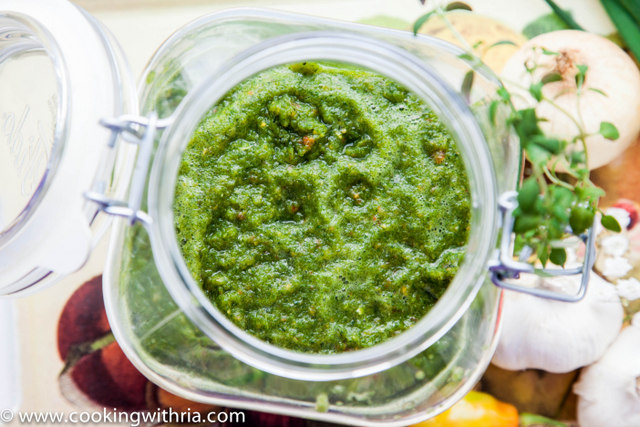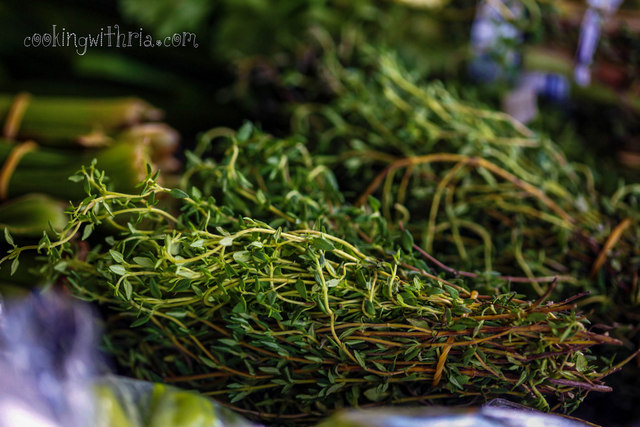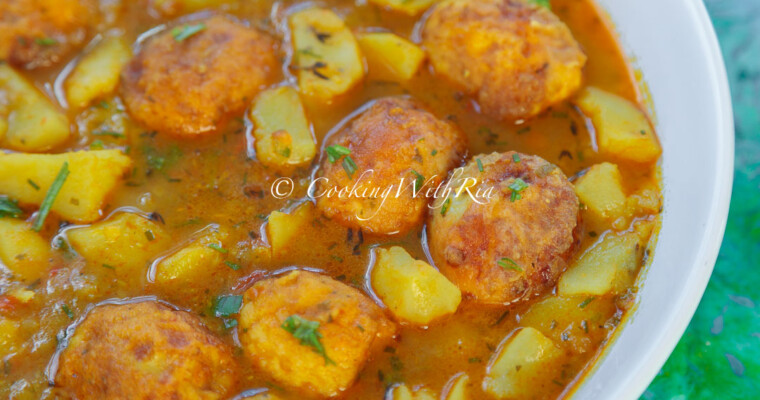What is Green Seasoning?
Green seasoning or seasonin’ is a blend of herbs and other aromatics and a quintessential element of Caribbean cooking. Easy to make and endlessly customizable, it is a must-have for Caribbean home cooking, whether you’re spicing up a weeknight dinner or preparing a family feast.
Table of Contents
We always have a jar of green seasoning in the fridge and use it as a marinade. It is our natural flavor enhancer for meats, seafood, stews, curries, put “pot-spoonfuls” into soups and one-pot rice dishes to enhance the flavor. Not only does it add flavor, but it’s also loaded with nutrients!
If you’ve ever tasted Caribbean cuisine, you’ve likely encountered the vibrant and aromatic essence of green seasoning. This staple ingredient is a a culinary treasure and the ‘ secret’ in Caribbean kitchens, cherished for its ability to infuse dishes with fresh, complex, herbaceous flavor.
In this comprehensive guide, we’ll explore what Caribbean green seasoning is, how to make it, store it, and utilize it in your cooking. We’ll also dive into its history, regional uses, and other important details to help you appreciate this flavorful seasoning/marinade.
Other names for Green seasoning:
It is to Trinidad what pesto is to Italians and Sofrito and Recaito are to other parts of the Caribbean.
While “green seasoning” is the most common name, it can also be referred to as the following:
• Seasonin’
• Green Sauce
• Herb Blend
• Seasoning Paste
• Sofrito
• Recaito
• Epis
Some Islands That Use Green Seasoning:
Green seasoning is a beloved ingredient across the Caribbean. Here’s a look at some islands where it’s especially popular:
• Trinidad and Tobago
• Jamaica
• Barbados
• Saint Lucia
• Grenada
• Guyana
• Haiti
History of Green Seasoning
The origins of Caribbean green seasoning can be traced to the rich culinary traditions of the Caribbean islands. Its roots lie in the blending of African, Amerindian, European, and Indian influences, reflecting the diverse cultural heritage of the region.
Each island has its variations, with slight differences in ingredients based on local availability and culinary traditions.
Herbs like culantro, also called bandhania or shado beni, are native to the region, while other ingredients like thyme and garlic were introduced through colonial trade. Though exact timelines are unclear, green seasoning became a staple as Caribbean cooks sought ways to marinate and tenderize proteins before cooking.
My personal challenge learning to make green seasoning
Each cook has their own unique blend which means that the flavor profile of the same dish will vary by household.
Over the years I have obsessed with the combination and quantities used and often taunted Mummy with questions, how much of this and how much of that, until one day I decided to un-complicate my life…
I now use one bunch (regular size) each of whatever I find in my supermarket, add onion and garlic and voila—green seasoning.
The green and red sweet peppers and pumpkin are newer additions and totally optional, however, those ingredients contribute additional flavor.
Many times I don’t find culantro or don’t feel like using parsley, don’t have pumpkin or sweet peppers. Other times, there may be no pimentos at the supermarket…….. no problem…..
Caribbean Make Do Culture
In the Caribbean we have a “making do” culture, that is we use whatever we have on hand. If there is only culantro (also known as bandhania, shado beni, chandon beni) growing in the yard and we don’t feel like going to the market, then so be it, green seasoning will consist of only bandhania, onion and garlic that day.
There are also a few of us who will “borrow” a scallion or thyme from the neighbor, with no intention of returning it. That is the culture of “borrowing” in Trinida
How to Make Green Seasoning?
Making Caribbean green seasoning is a straightforward process. However, the following list of ingredients should only be used as a guideline. If there are ingredients in this list that don’t tickle your fancy, then leave it out. Keep in mind that the basic formula for green seasoning is:
The key ingredients in traditional green seasoning include:
- Scallions (Green Onions)
- Thyme
- Culantro (Shado Beni) or Cilantro
- Garlic
- Onion, optional
- Parsley
- Celery (optional)
- Pimento Peppers (or sweet peppers if unavailable)
- Hot Peppers like Scotch bonnet, congo, wiri wiri or habanero for a spicy kick (optional)
Simply wash, roughly chop, and blend these ingredients into a smooth or coarse paste, depending on preference. Some recipes may add ginger or even vinegar to prolong shelf life.

How was Green Seasoning Traditionally Made | Traditional Tools?
Green seasoning was traditionally ground daily on an “as needed” basis using grinding stones; a “sil, a small stone slab base and “lorha”-a round stone. These were made from natural stone found near rivers. Curry powders and chutneys were also made using the sil and lorha. Then came the food mill as seen below.
Now, thanks to modern technology, we have blenders and food processors, but one must wonder how much flavor is lost with these shortcuts.
Culinary Uses of Caribbean Green Seasoning:
Caribbean green seasoning is incredibly versatile and is used as a marinade for meats, seafood, stews, curries and put “pot-spoonfuls” into soups and one-pot rice dishes to enhance the flavor. Not only does it enhance flavor, but it’s also loaded with nutrients!
Here are some popular ways to incorporate it into your cooking:
- Marinades: Use green seasoning as a marinade for meats, seafood, or tofu. It adds a flavorful kick.
- Curries: Marinating meats before currying adds extra flavor.
- Soups and Stews: Stir a spoonful into soups or stews for a burst of freshness and complexity.
- Rice and Beans: Mix into your favorite one pot rice dish (e.g pelau) or rice and beans for an extra layer of flavor.
- Vegetables: Toss with roasted or sautéed vegetables for an herbaceous twist.
- Sauces and Dressings: Blend into sauces or salad dressings for added depth.
Tips for Perfecting Your Green Seasoning:
- Customize It: Green seasoning is highly personal; use herbs and vegetables that match your tastes. For instance, if you like more heat, add extra hot peppers.
- Traditional Tools: In the past, Caribbean cooks used a mortar and pestle (sil and lorha) for a chunky texture, but today most people use blenders or food processors for convenience.
- Flavor Boosters: Some folks add oil, vinegar or lime juice to enhance the flavor and act as a preservative. I do not personally add these ingredients as they affects the final products. I also like to manage the amount of oil or tartness of a dish. Vinegar and Lime do not complement many traditional dishes.
How to store Caribbean Green Seasoning:
To preserve its fresh flavor and vibrant color, store green seasoning in an airtight glass jar in the fridge. Without added preservatives like vinegar or oil, it lasts around 1–3 weeks. However, adding olive oil can extend its life to about a month
For longer storage, you can place the blended seasoning in a resealable bag, flatten and freeze. You can easily break off pieces while cooking. You can also freeze green seasoning in ice cube trays or small glass containers. This will keep it good for up to 6 months. Make sure to label the containers with the date to keep track of their freshness.

FAQS
Do you add hot peppers to Green Seasoning?
I never add hot peppers to my green seasoning because of my little ones, and yes, the Hubbie too. Hot peppers give him hiccups.
What is a good substitute for hot pepper in Green Seasoning?
Instead of the hot pepper, I use pimiento peppers, bell peppers, or Spanish ajicito, because of the immense flavor it adds to food without the heat.
What are Caribbean Pimento Peppers?
Pimento peppers are also known in Trinidad and Tobago as seasoning or flavoring peppers. Many islands have their own version of it.
The aji dulce or ajicito, shaped like a dented, spinning top, is found in grocery stores in Latino neighborhoods. In Cuba, there is a similar variety called chile cachuca. The two limiting factors in my use of pimento peppers are the cost; I usually pay $1.00 for four very small (“choongsee”) ones, and availability; it is only found in the West Indian or Asian markets. Ajicitos are more popular in my neighborhood supermarkets.
Which is better to make green seasoning: a Blender or a Food Processor?
Either or will work. The seasoning made in the blender will be smoother and require water to blend. The food processor will make a more coarse, concentrated green seasoning.

Green Seasoning Recipe
Ingredients
- 4 scallions aka green onions, also called "chives" in Trinidad
- 1 bunch thyme remove very thick stems
- 1 bunch cilantro
- 1 bunch culantro aka bandhania or shado beni
- 1 bunch parsley
- 2 heads garlic peeled
- Optional:
- 1 stalk celery
- 6 pimento peppers stemmed
- ½ red sweet pepper seeded
- ½ green sweet pepper seeded
- Habanero congo, scotch bonnet, cherry pepper or other hot pepper, to taste
Instructions
- Wash, drain and roughly chop herbs, onion, sweet pepper, onion and any other ingredients you are using.
- Place all ingredients in a blender and food processor and puree until fine. Water is not required in a food processor, but add just enough water to blend in the blender. Scrape down sides and pulse again.
- Place in a glass jar, close tightly and store in the refrigerator. Will stay 1-2 weeks (sometimes I keep it up to a month in the refrigerator).
- The color will vary depending on the combination of ingredients used.
- Alternatively, pour into ice trays, freeze. Remove cubes, place in a resealable bag and store in the freezer, until ready to use.
Video
STEP 1


Now that you know all about green seasoning, watch my detailed video for more info and then whip up a batch and experience the life-altering flavors for yourself… and say goodbye to bland, boring meals for good……!
























Hi Ria, I always try to make seasoning in a blender but it always comes out bad and mushy . Could you tell me what machine you used, and if you added any water? Also, where could I buy the grinder in your photo? Thanks very much, and I truly enjoy your blog !
Hi Maria..Thanks for visiting my blog! I use a cusinart food processor which I received as a gift from my sister. Food processors are sold at all major appliance store. I used no liquid and don't over process because I like my GS with some texture…When I use a blender, I just add just enough water to get it all moving. No more no less..
Thanks for this Ria! I just made some excellent Trini Pelau tonight, made green seasoning as per what my father said to use, but I might have to try some of your recommendations next time!
Thanks Stacey! Also check out my pelau recipe on this site..:-)
Love this post – not sure how I missed this post before. I just took a photo of my mother's old sil and lorha which I remember loving to use, despite the bruised knuckles from inexpert technique!
https://www.flickr.com/photos/chennette/15749463356/
Oh my word, I made this today and made a few substitutions coz I didn't have culantro. And I always like my food spicy so I added a few scotch bonnets. I am so happy! It tastes divine.
I love your recipes it brings me back to my granny